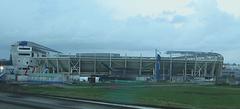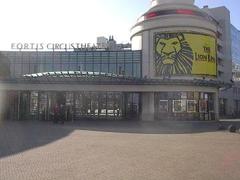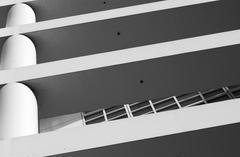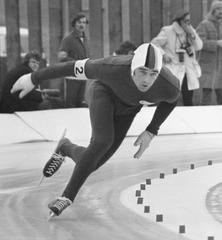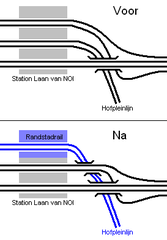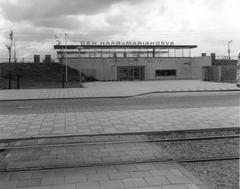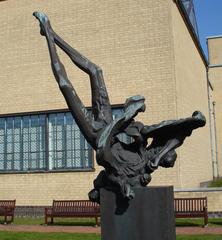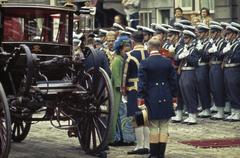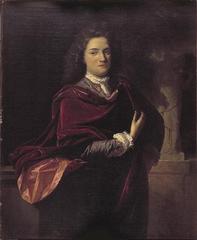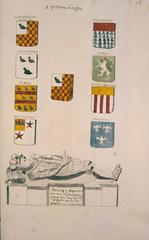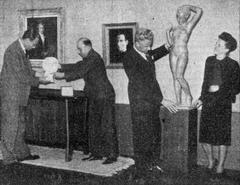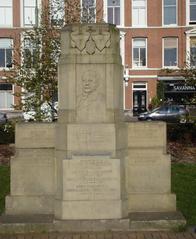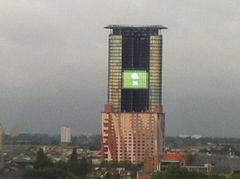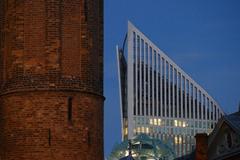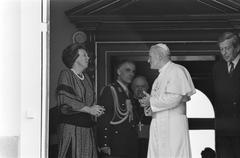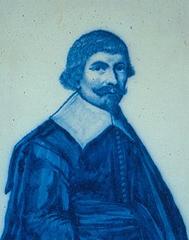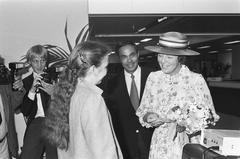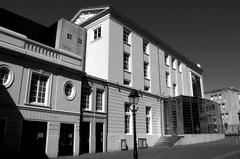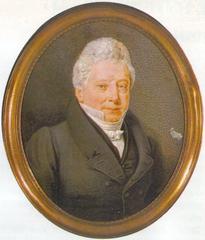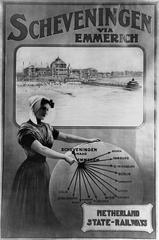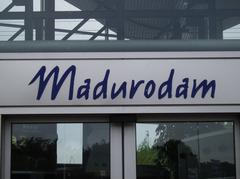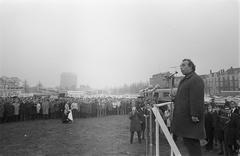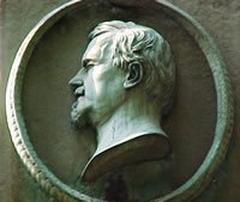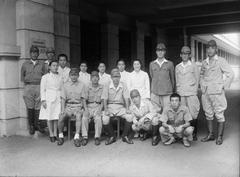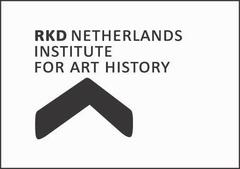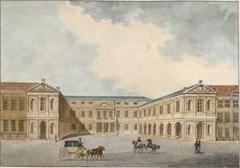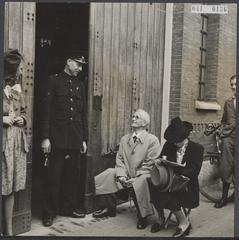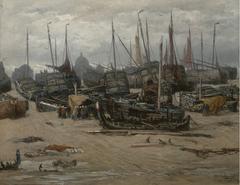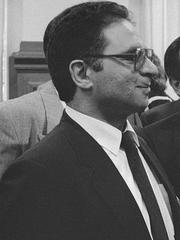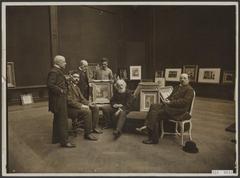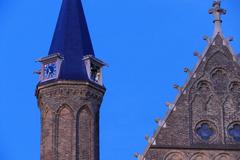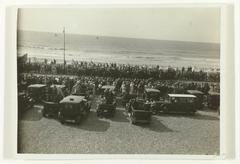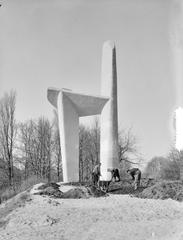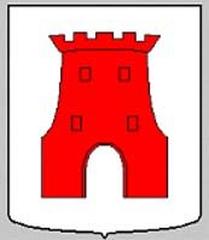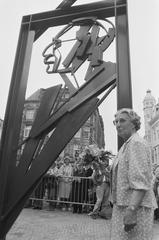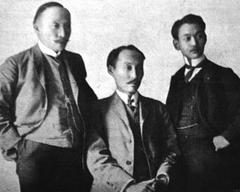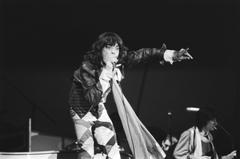
Grote Markt The Hague: Visiting Hours, Tickets, and Historical Sites Guide
Date: 04/07/2025
Introduction: History and Significance of Grote Markt
Located in the vibrant heart of The Hague, the Grote Markt is a dynamic public square that encapsulates the city’s rich history and contemporary energy. Once the site of the 15th-century St. Elizabeth Convent, the area evolved into the city’s main marketplace in the 17th century and now serves as a lively hub for community, culture, and entertainment. Visitors are drawn to its harmonious blend of historical landmarks—such as the iconic Boterwaag—and its contemporary flair, with modernist structures like the De Volharding building. The square’s accessibility via public transport and its pedestrian-friendly layout make it a welcoming destination for all (nl.wikipedia.org, denhaag.com).
Grote Markt’s significance extends beyond its architecture. It is a focal point for The Hague’s cultural life, hosting year-round festivals, markets, and public events. The presence of the beloved Haagse Harry statue, a local comic icon, further underscores its role as a center of creative expression and community gathering (dutchreview.com, myglobalviewpoint.com).
This comprehensive guide details Grote Markt’s visiting hours, ticketing information, historical evolution, cultural highlights, accessibility, nearby attractions, and practical travel tips, ensuring you make the most of your visit (gmdh.nl, visitnetherland.com).
Table of Contents
- Medieval Origins and Early Development
- Architectural Evolution and Notable Structures
- Cultural and Social Significance
- Architectural Highlights and Visitor Experience
- Visitor Information
- Travel Tips and Accessibility
- Nearby Attractions and Things to Do
- FAQ
- Conclusion and Essential Recommendations
- References and Further Reading
Medieval Origins and Early Development
The earliest history of Grote Markt traces back to the founding of the St. Elizabeth Convent in 1452, one of several nunneries marking The Hague’s religious landscape during the Middle Ages. After the convent was destroyed by fire in 1584 and subsequently demolished following the Reformation, the area was repurposed. By 1614, it became an official market square, facilitating trade and the city’s economic expansion. The adjacent Lutherse Burgwal canal and the construction of the Prinsegracht (1642) further cemented the square’s commercial importance by improving accessibility and trade routes (nl.wikipedia.org).
Architectural Evolution and Notable Structures
17th–19th Century: Market Halls and Urban Expansion
As commerce flourished, dedicated trade buildings like the Koorenhuis (Grain House) and Boterhuis (Butter House, now Boterwaag) were constructed, reflecting the square’s economic vitality and the era’s characteristic Dutch civic architecture. These venues underlined the city’s prosperity during the Dutch Golden Age. The subsequent infilling of canals in the late 19th century shifted the market’s logistics and led to the eventual relocation of large-scale trading activities in 1938 (nl.wikipedia.org).
20th Century: Modernism and Urban Renewal
In the 20th century, Grote Markt adapted to changing urban needs, including service as a central bus station. The most notable architectural addition was the De Volharding building (1927–1928), an exemplar of the Nieuwe Bouwen style with its functionalist design and pioneering use of illuminated signage. Extensive restorations in the 1980s revitalized historic buildings like the Boterwaag and transformed the square into a pedestrian-friendly zone, enhancing its social and architectural appeal (nl.wikipedia.org).
21st Century: Modern Infrastructure
A pivotal update arrived in 2004 with the Den Haag tramtunnel, integrating underground tram access directly beneath Grote Markt. This preserved the square’s historic integrity while connecting it efficiently to the wider city, making it highly accessible for all visitors (nl.wikipedia.org).
Cultural and Social Significance
Civic and Social Role
Grote Markt has always been more than a commercial center; it is a gathering place that adapts to the city’s evolving needs. Today, it is renowned for its vibrant terraces, lively cafés, and night-time entertainment, all housed in beautifully restored historic buildings such as the Boterwaag (nl.wikipedia.org, visitnetherland.com).
Public Art and Local Identity
The square’s identity is strongly tied to local culture, highlighted by the statue of Haagse Harry, an emblematic comic figure who captures the spirit and humor of The Hague. This public artwork is a favorite meeting spot and a reminder of the city’s creative edge (dutchreview.com).
Preservation and Entrepreneurship
Much of the square’s current charm is thanks to local entrepreneurs committed to the preservation and adaptive reuse of historical properties, balancing heritage with urban vibrancy (nl.wikipedia.org).
Architectural Highlights and Visitor Experience
Key Buildings
- Boterwaag (Boterhuis): A 17th-century butter weighing house, now a popular café and live music venue.
- De Volharding: A landmark modernist building known for its striking design and pioneering neon signage.
- Haagse Harry Statue: Celebrates the city’s dialect and pop culture (dutchreview.com).
Urban Layout and Atmosphere
The square is fully pedestrianized, lined with historic and modern buildings, and features spacious terraces that create a welcoming and lively atmosphere year-round. Motorized traffic is absent, making it a safe and enjoyable space for relaxation and socializing (nl.wikipedia.org, dutchreview.com).
Accessibility and Connectivity
Centrally located, the square is served by multiple tram and bus lines via the Den Haag tramtunnel, and is close to major attractions like the Binnenhof and Mauritshuis (visitnetherland.com).
Visitor Information
Visiting Hours
- Square: Open 24/7 as a public space.
- Venues: Most cafés and restaurants open from 10:00 AM to 10:00 PM or later; check individual venues for precise hours.
Tickets and Entrance Fees
- Square: No entrance fee; free public access.
- Events: Some festivals and special activities may require tickets—see official agenda for details.
Guided Tours and Events
- Walking tours of The Hague often feature Grote Markt, and can be booked through local operators or official tourism resources.
- The square hosts regular events, from music festivals to open-air markets—consult local listings for current schedules.
Travel Tips and Accessibility
- Best Time to Visit: Spring and summer afternoons for vibrant terraces and festivals; mornings or weekdays for a quieter atmosphere.
- Getting There: Easily accessible by tram (lines 2, 6, 3, and 4), bus, bicycle (secure parking at Biesieklette Grote Markt), or on foot from the city center.
- Parking: Limited car access; paid parking garages are nearby, but public transport is recommended.
- Accessibility: The square is wheelchair and stroller-friendly, with accessible public transport and venues. For special requirements, contact staff in advance ([email protected]).
Nearby Attractions and Things to Do
- Binnenhof: Historic seat of Dutch Parliament (Binnenhof Info)
- Mauritshuis Museum: Masterpieces by Vermeer and Rembrandt (Mauritshuis Details)
- Lange Voorhout: Antique & Book Market, sculpture walk (Market Tips)
- Zeeheldenkwartier: Trendy neighborhood with indie shops and cafés (Neighborhood Guide)
- Kunstmuseum Den Haag: Modern art museum (Museum Info)
- Day Trips: Delft and Rotterdam are easily accessible by train (Day Trip Ideas)
Frequently Asked Questions (FAQ)
Q: What are the Grote Markt visiting hours?
A: The square is open 24/7; individual venues may have specific opening and closing times.
Q: Is there an entry fee?
A: No, access to the square is free. Some events or clubs may charge admission.
Q: How do I get to Grote Markt?
A: By tram, bus, bicycle, or on foot from the city center.
Q: Is Grote Markt accessible for people with disabilities?
A: Yes, the square and most venues are wheelchair-accessible.
Q: Are guided tours available?
A: Yes, local operators offer tours including Grote Markt and nearby historical sites.
Q: Where can I find event and ticket information?
A: Visit the official Grote Markt agenda.
Conclusion and Essential Recommendations
Grote Markt offers visitors a unique blend of history, culture, and modern urban life, with free public access and year-round activities. Its central location, excellent transport links, accessible design, and proximity to major landmarks make it an essential destination for anyone exploring The Hague. Whether you attend a lively festival, relax on a sunny terrace, or delve into the city’s history, Grote Markt is sure to be a highlight of your Dutch adventure.
For up-to-date events, guided tours, and tailored recommendations, check the official Grote Markt website and consider downloading the Audiala app for even more insights.
References and Further Reading
- Grote Markt The Hague (Wikipedia)
- Den Haag Tourism – Grote Markt
- TripXL – Things to Do in The Hague
- Grote Markt Official
- Who is Haagse Harry? (Dutch Review)
- Visit Netherland – The Best Places to Visit in The Hague

